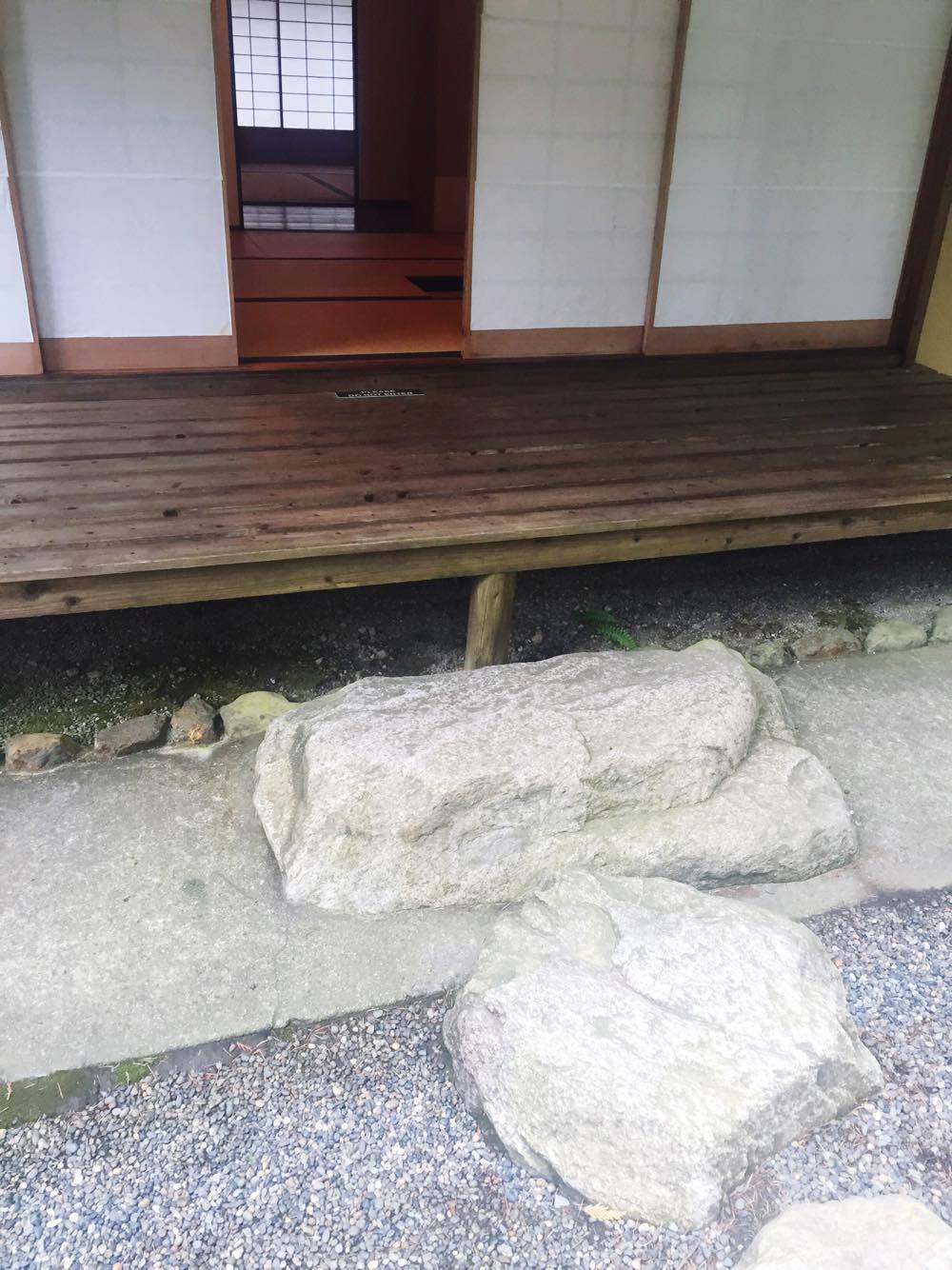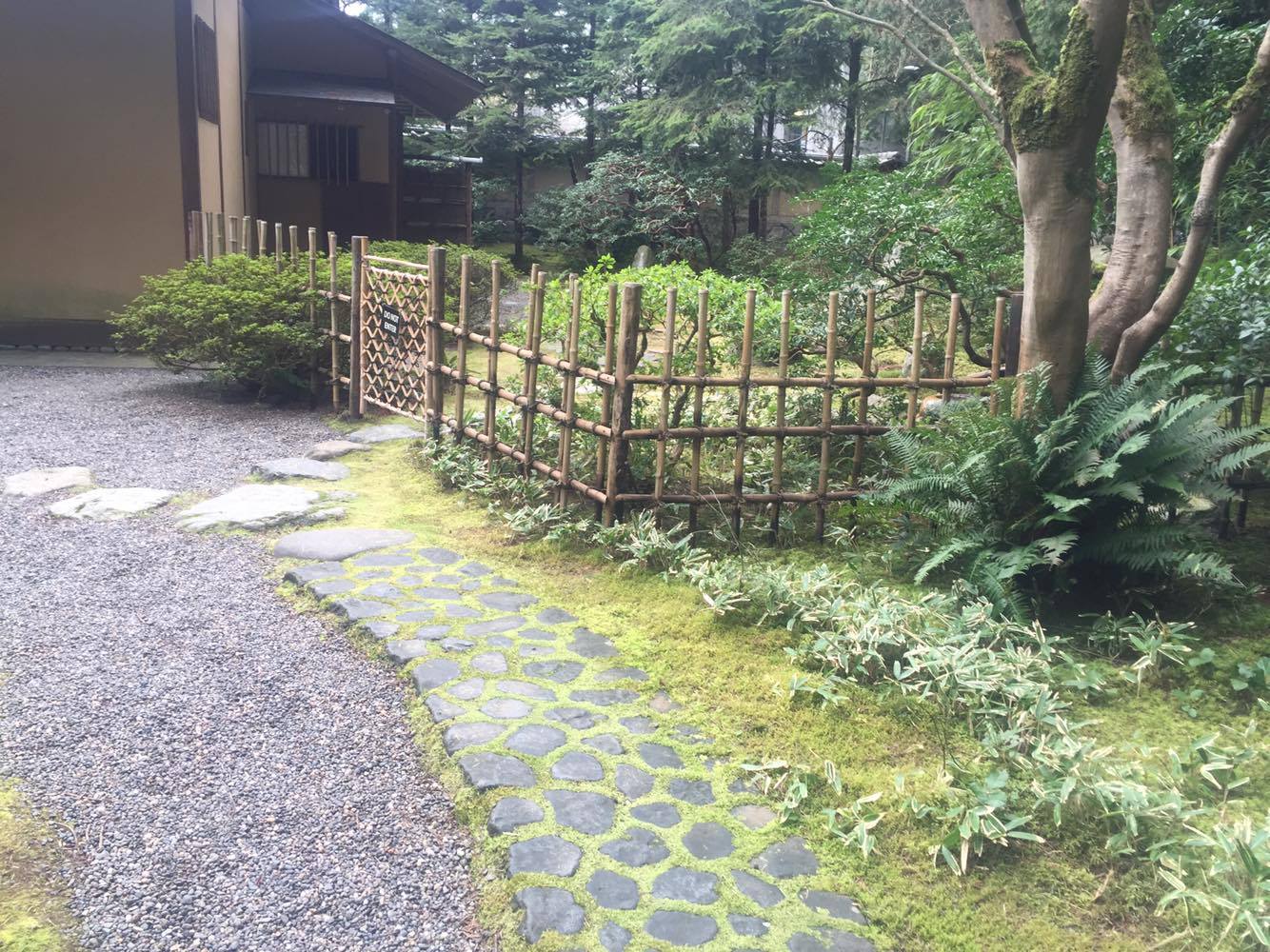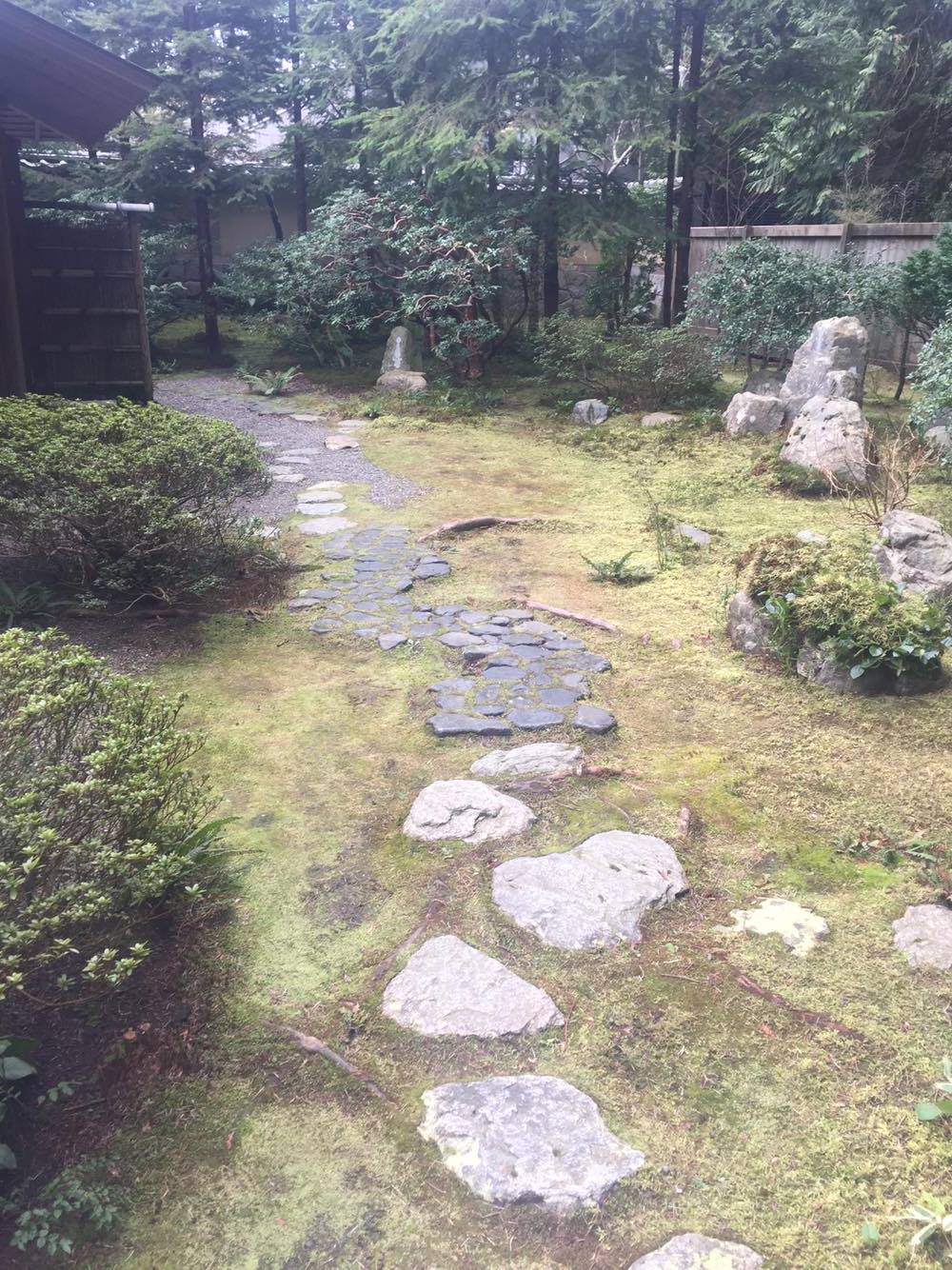Japanese garden “is an art form that has developed over thousands of years”. [1] To create a Japanese Garden, the use of path stones must be carefully selected, designed and arranged in the garden. Path stones can be categorized into three different styles: stepping-stone, paving stone and pebble stones. Stepping-stone is the bigger, flat type of stones. This kind of stone is usually inlaid into the ground with approximately 5 inches of the stone protruding out from the ground.
The size of the paving stones may vary, but the paving stones must be levelled. They are also inserted into the ground. However, the ground and the stones must form a flat surface. Another type of path stone is pebble stone. Pebble stones are spread out on the ground, but they are neither pasted nor attached to the anything, they are loose, free to move around and small when compared to the size of the stepping stones and paving stones. The use of each kind of stone has a purpose in creating Japanese Garden. According to Ryo Sugiyama[2], the use of stepping-stones in a Japanese Garden is to guide and lead people towards the teahouse. The paving stone should be used when there is beautiful scenery around to prevent people from stumbling while looking at their surroundings, because the smooth paving stone path makes the road easy to walk on. Furthermore, the fine pebble stones are used to represent the watery wave in a dry landscape garden.

The Nitobe Memorial Garden in UBC uses all three types of stone to create a balance between nature and man-made style, called Gyō style. “Paths in the semi-formal Gyō- styles are a combination of dressed stone and naturally shaped stone”. [3]The stepping-stones are naturally formed and placed on the ground, and leads to the teahouse in Nitobe Garden. Paving stones are merged into the moss ground to create a natural path lane. The paving stone lane is smooth and easy to walk on; there is the teahouse yard on one side of the road. Therefore, people can pay more attention to the scenery instead of the steps. The Nitobe Memorial Garden uses a lot of pebble stones on the major routes. Not only it is a walkway for people to stay on track, but it also represents the vast ocean in a dry landscape. “Stone pathways in Japanese gardens are indications of our journey through life.”[4] Japanese gardeners arrange different stones to create the stone pathway in the garden to perfect the balance between living and nature.

[1] Young, David E., Michiko Young, Ben Simmons, and Yew Hong. Tan. The Art of the Japanese Garden. Tokyo: Tuttle Pub., 2011. (p.9)
[2] Ryo Sugiyama, “ Japanese Garden Convention.” Lecture UBC Vancouver, February 24, 2016.
[3] Niwashyu
http://www.japanesegardens.jp/mt_pdfs/RJG%20-%20Paths%201%20-%20Example.pdf 2013
[4]Russell Chard, Japanese and Zen Gardens. Zenibo Marketing Ltd December 1, 2013) (P15)